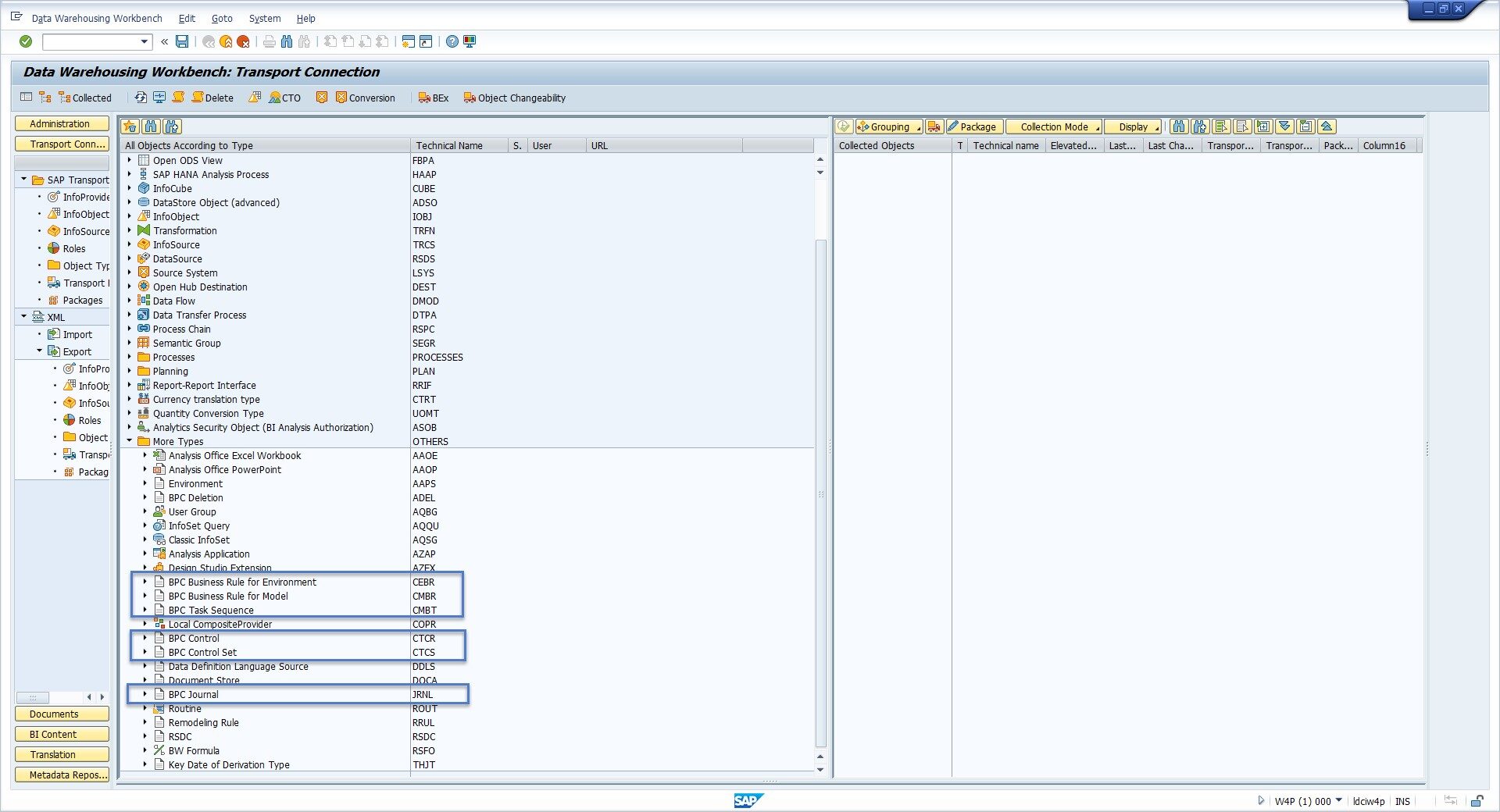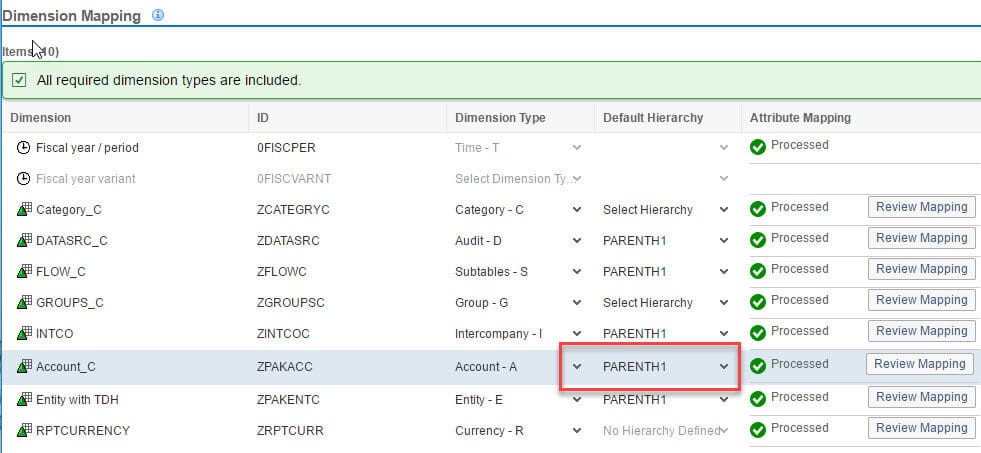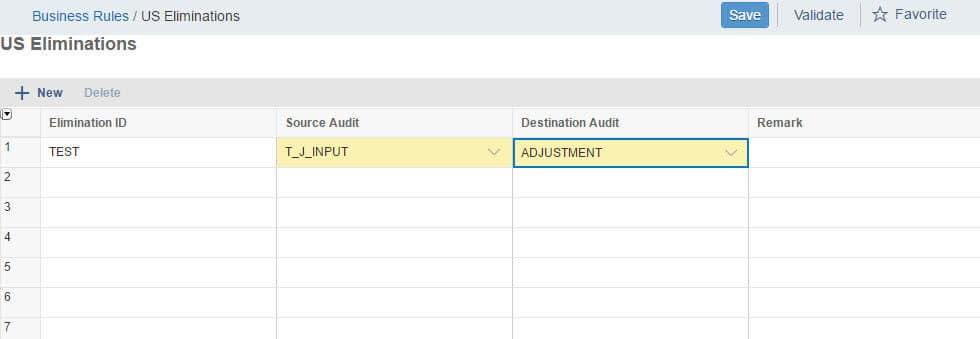[BPC 11] Limitation removal for consolidation on embedded model
In BPC NW 10.1, the consolidation is also supported on top of embedded model.
But still, there’re some limitations existed for consolidation on embedded model.
With the release of BPC 11, these limitations have now been removed.
Transport for consolidation related configuration
In previous release, some BPC consolidation related configurations can’t be transported via the transportation framework, including:
- Business rule definition
- Control rule definition
- Journal template definition
- Task sequence definition
Although a program was delivered (see note 2415465), by which user can export these configuration from the source system and import into the target system, it is still a workaround other than a solution.
In BPC 11, these configurations now can be transported under the standard transportation framework, like other components.
Fixed hierarchy for business rules definition
In previous release, user needs to assign one hierarchy for related dimension in the modeling UI. Then this hierarchy will be used in the business rule definition. But that also means, in the business rule definition, user can only select members from that hierarchy.
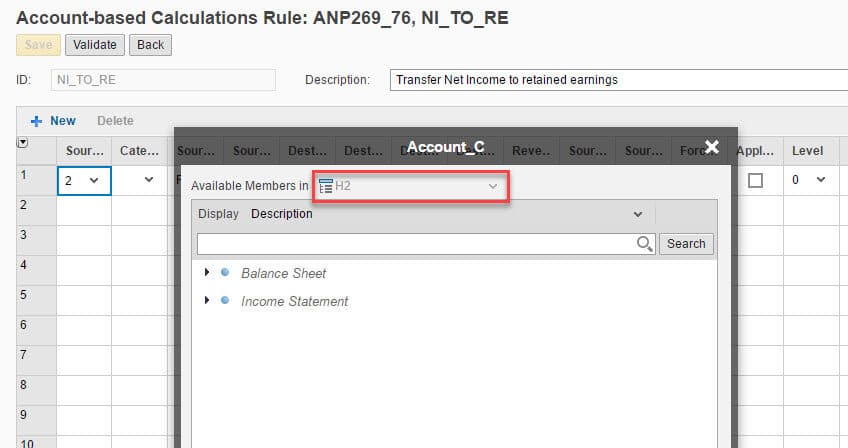
This is not user friendly because using multiple hierarchies is a common practice. Using Account dimension as an example, Elimination and Adjustment rule will use the common hierarchy like B/S and P&L. But for IC Booking rule, it would use another hierarchy in which receivable and payable accounts may under the same parent node.
In BPC 11, such limitation is now removed. User can still assign one hierarchy in the modeling UI.
But that hierarchy will only be the default hierarchy in business rule definition. User can still switch to another hierarchy in the member selector.
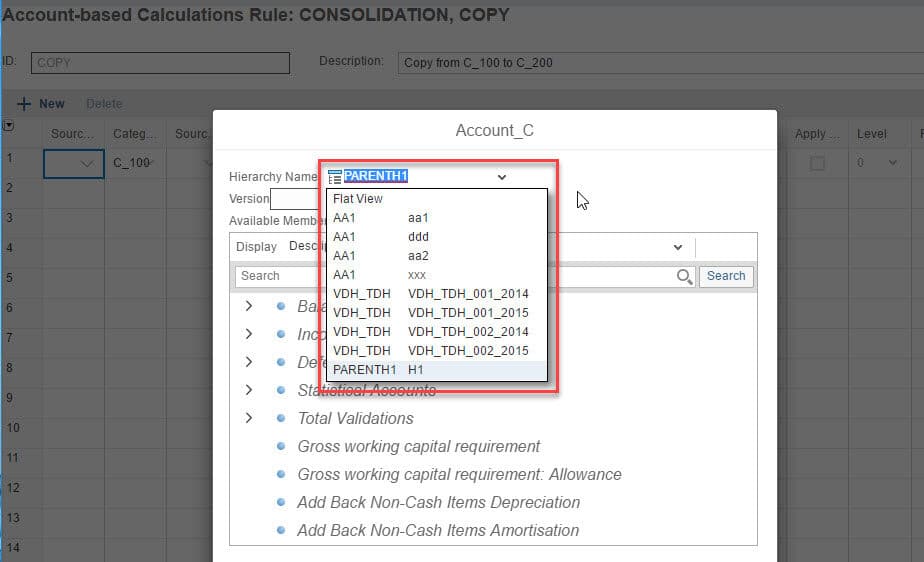
Fixed value for Compounding InfoObject
One difference between standard and embedded model is, in embedded model, it’s supported to use compounding infoobjects in the data model.
But for consolidation, there was one limitation which is, for the compounding infoobject, user must give a fixed value for its superior infoobject. For example, time infoobject is 0FISCPER which is a compounding infoobject with its superior infoobject ‘Fiscal Year Variant’. Then in the modeling, user must give a fix value for ‘Fiscal Year Variant’.
This is fine for some of the infoobjects, like the Fiscal Year Variant for Time infoobject, the Chart of Account for Account infoobject. But for some other infoobject, such limitation will reduce the flexibility of data modeling, such as Company with Region, Cost Center with Controlling Area.
In BPC 11, such limitation is removed.
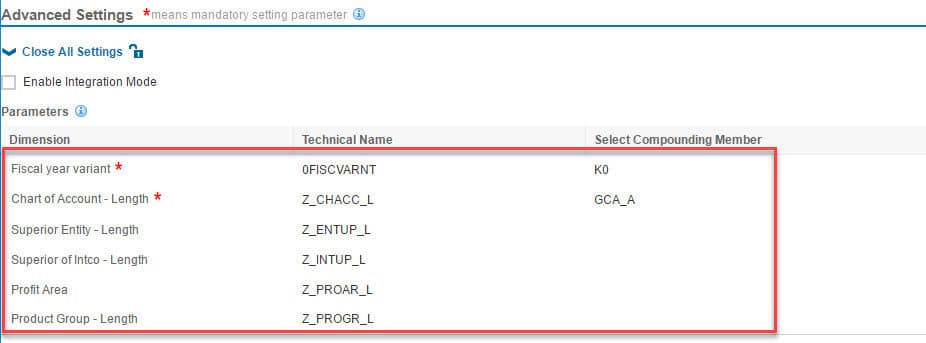
But please notice, for Account infoobject and Time infoobject, user may still need to give a fix value for their superior infoobjects.
US Elimination rule and Matrix Consolidation
In previous release, the business rule US Elimination is not supported in embedded model.
In BPC 11, US Elimination is now supported in embedded model. By supporting this, it is also possible to run matrix consolidation in one single model, by using Elimination and Adjustment rule on entity/intco dimension, and using US Elimination rule on a different perspective such as profit center and partner profit center.
Compare with standard model, there’re some differences in the modeling and configuration.
In standard model, user can decide which dimensions are the entity dimension and the intco dimension for US Elimination. This is assigned in the business rule definition UI.
In BPC 11 embedded model, the setting is different, user needs to define it in the modeling UI instead of business rule UI.
In the modelling of consolidation model, user needs to map the infoobjects in the infoprovider with the required dimension types for consolidation. For US Elimination, two additional dimension types are introduced.

User can map one infoobject to a ‘P’ type dimension for entity in US Elimination, and another infoobject to a ‘Q’ type dimension for intco in US Elimination.
Please notice that, the ‘E’ type and ‘I’ type infoobjects are still mandatory one, this means, in embedded model, US Elimination can only be used in the matrix consolidation scenario. It is NOT possible to create a consolidation model which only use US Elimination without Elimination and Adjustment rule.
New NetWeaver Information at SAP.com
Very Helpfull

